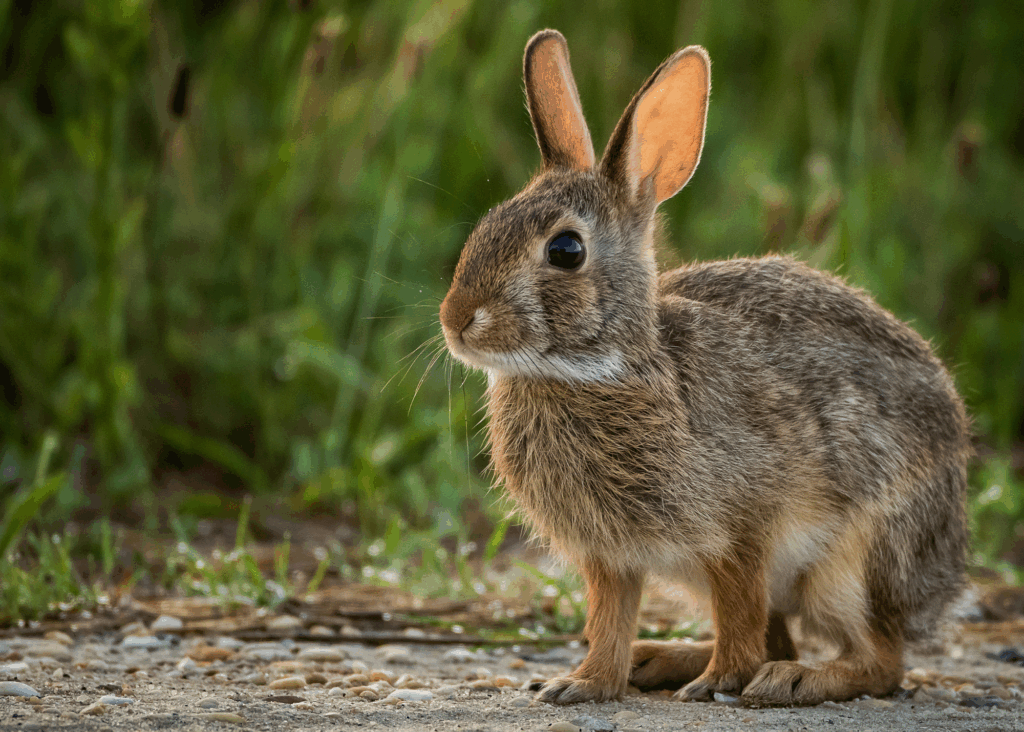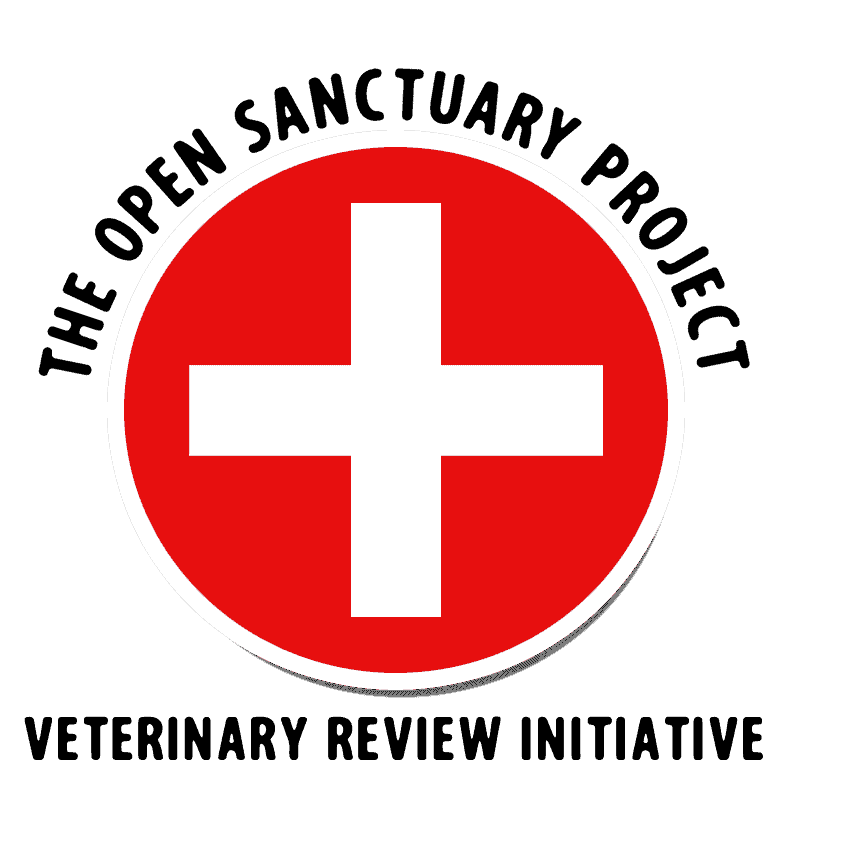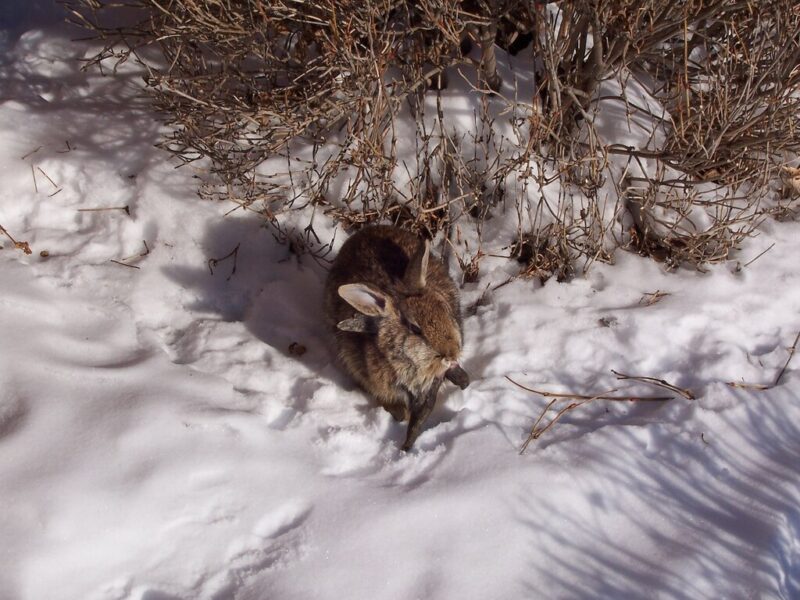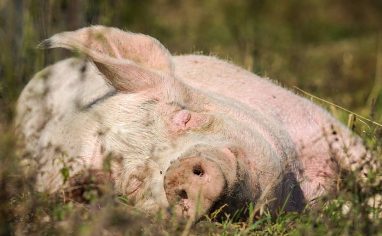

Veterinary Review Initiative
This resource was reviewed for accuracy and clarity by a qualified Doctor of Veterinary Medicine as of September 2025.
Check out more information on our Veterinary Review Initiative here!
Check Back For Updates
This is an evolving situation. We’ll be updating this resource weekly and will indicate when it was last updated above.
Introduction
While scrolling through or listening to the news, you may have heard about strange cases of wild rabbitsUnless explicitly mentioned, we are referring to domesticated rabbit breeds, not wild rabbits, who may have unique needs not covered by this resource. with black, horn-like growths reported in Northern Colorado. You may have even seen sensationalized headlines referring to “zombie” or “Frankenstein” rabbits. Understandably, these reports can cause concern for caregivers at sanctuaries and rescues with rabbitUnless explicitly mentioned, we are referring to domesticated rabbit breeds, not wild rabbits, who may have unique needs not covered by this resource. residents. This mini-resource seeks to answer common questions caregivers may have about the virus causing these growths and how it may (or may not) affect their sanctuary residents.
For sanctuary caregivers, understanding how to recognize, manage, and minimize the spread of viruses is an important part of providing safe and compassionate care. Fortunately, this particular virus is largely limited to certain regions. While it’s always helpful for rabbit caregivers to learn about rabbit health conditions—especially when taking in residents transported from other areas—Shope Papillomavirus (SPV) is mostly an issue in the Midwest and some Western regions of the United States. Read on to learn more!
What Is Shope Papillomavirus?
Shope Papillomavirus (SPV), also known as cottontail rabbit papillomavirus (CRPV), is a viral infection that can affect both wild and domesticatedAdapted over time (as by selective breeding) from a wild or natural state to life in close association with and to the benefit of humans rabbits. SPV primarily affects wild cottontail rabbits, but domesticated rabbits in homes, sanctuaries, and rescues can also be exposed and contract the virus.

WD45, CC BY 2.0 https://creativecommons.org/licenses/by/2.0, via Wikimedia Commons
SPV causes wart-like growths, typically on the head and neck, but they can also appear in other areas. These growths can expand and spread, sometimes becoming quite alarming in appearance. This virus is not generally life-threatening in wild rabbits. However, in severe cases, rabbits may die if the growths interfere with their ability to eat or drink. It can also leave them vulnerable to predation if the growths are in or near their ears and eyes, and affect their ability to see or hear properly. In domesticated rabbits, these growths can also become cancerous, though this is not always the case.
Where Is SPV A Problem?
This virus primarily affects the cottontail rabbit species in North America, particularly in the Midwest region of the United States. However, there have been cases noted in surrounding states as well. Most recently, sightings have been reported in Northern Colorado. If you have questions about whether SPV is an issue in your area, reach out to your veterinarian for information.
How Does SPV Manifest in Rabbits?
SPV presents as firm, wart-like growths (papillomas) on the skin, mostly around the head, neck, and shoulders, though they can also appear elsewhere on the body. Growths may begin small, soft, and pink, but can thicken and darken over time. Sometimes only one or two papillomas develop, but in severe cases, many can form and become quite large, interfering with the rabbit’s ability to eat, drink, breathe, see, hear, or groom.
Does SPV Go Away?
In many cases, the rabbit’s immune system eventually clears the virus, and the growths disappear. The length of time depends on the rabbit’s immune system and the presence of environmental stressors and other health issues. Not all rabbits recover this way, and papillomas may remain. In cottontail rabbits, these growths are usually benign, aside from the possibility of them obstructing an individual’s ability to care for themselves. Unfortunately, in domesticated rabbits, papillomas sometimes progress into malignancy, becoming cancerous. Careful observation of any changes in the papillomas is key. Working with an experienced rabbit veterinarian is essential to ensure each individual receives the best possible care.
How Is SPV Spread Between Rabbits?
SPV primarily spreads through biting insects, such as flies, mosquitoes, and ticks. It can also spread through direct contact.
Is SPV Contagious to Humans?
No. SPV only affects rabbits.
Is SPV Contagious to Other Species?
No. SPV only affects rabbits.
What Biosecurity Measures Can I Implement to Protect Rabbit Residents?
Strong biosecurity practices are always important for protecting sanctuary residents. If you are in a region where SPV is a concern, you can take extra steps to reduce exposure risk:
- Keep rabbits indoors whenever possible. Indoor housing greatly reduces exposure to biting insects (though it doesn’t eliminate it). All rabbit residents should have safe indoor living spaces for shelter and protection.
- Screen or cover outdoor areas. If rabbits have outdoor living spaces, cover them with fine mesh or netting. Ensure the material is safe so residents can’t chew through it or become entangled. Their outdoor living spaces must be predator proofed.
- Be strategic with compost piles. Flies are drawn to decomposing organic matter. Keep compost piles far from rabbit housing. For more information, see our composting resource.
- Address drainage issues. Standing water and swampy areas provide breeding grounds for biting insects.
- Clean living spaces regularly. Soiled bedding, uneaten hay, straw, and food scraps attract flies. Keep both indoor and outdoor areas clean, removing soiled bedding and old food promptly.
What If I Suspect One of My Rabbit Residents Has SPV?
If you suspect a rabbit resident may have SPV:
- Contact your veterinarian immediately.
- Isolate the individual. Separate the affected rabbit while considering their social and emotional needs. Whenever possible, ensure the individual can see their companion(s) and vice versa. Add social enrichment to their care routine.
- Move other residents into areas with strong insect protection.
- Sanitize living spaces, bowls, enrichment, and furniture. Use separate cleaning tools for affected rabbits.
- Keep detailed records. Track the number, size, and location of growths, and note any changes. Photographs are helpful.
- Observe behavior closely. Watch for difficulty eating or drinking, changes in grooming, or scratching at growths.
Provide an environment that minimizes the risk of injury to growths, as wounds can lead to infections. Avoid touching papillomas, as this may cause discomfort. If growths interfere with eating or drinking, offer food and water in more accessible ways. For example, if a growth prevents a resident from comfortably drinking from their water bowl, try a bowl with a wider opening or try a bottle. Be aware of potential changes in sight or hearing, and adjust care accordingly. Work closely with your veterinarian to support the rabbit’s immune system and check in if growths or behaviors change. With proper support, many individuals recover fully over time.
What Do We Know About SPV in Other Species?
SPV is species-specific. Only rabbits are affected.
What Legal Measures Are Being Taken to Control the Spread of SPV?
Currently, no legal measures are in place to control SPV. Most wild cottontails naturally clear the virus within a year or two. Because SPV is limited to rabbits (who often recover), is found only in certain regions, and poses minimal “agricultural concern”, official “control measures” have not been implemented.
Summary
In summary, with informed care and biosecurity practices, sanctuary caregivers can minimize risks of exposure. While SPV is currently limited to certain regions, staying alert, practicing insect population prevention strategies, and working closely with experienced veterinarians are the best ways to keep residents healthy. We will continue to update this resource as new information becomes available. If you have any questions or experiences to share, please don’t hesitate to reach out to us—we are here to support you and your residents.
Infographic
Check out our infographic on Shope Papillomavirus. This is an easy way to share information on the topic!
Shope Papillomavirus Infographic by Amber D Barnes
SOURCE
Rabbit (Shope) Papilloma Virus | The University Of Missouri (Non-Compassionate Source)
Viral Diseases | The Laboratory Rabbit, Guinea Pig, Hamster, And Other Rodents (Non-Compassionate Source)
The Rabbit Papillomavirus Model: A Valuable Tool To Study Viral–Host Interactions | Philosophical Transactions Of The Royal Society, Biological Sciences (Non-Compassionate Source)
A Century of Shope Papillomavirus in Museum Rabbit Specimens | PLoS ONE (Non-Compassionate Source)
Non-Compassionate Source?
If a source includes the (Non-Compassionate Source) tag, it means that we do not endorse that particular source’s views about animals, even if some of their insights are valuable from a care perspective. See a more detailed explanation here.








